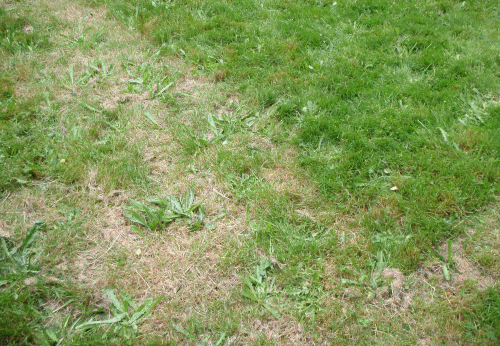What Victor said. Disturbance is your friend, particularly in this situation. Most conifer forests grow incredibly dense as they mature, blocking out so much light from the forest floor that eventually it becomes a biological wasteland. That's not even a monoculture thing, that's just a conifer thing in general. With hardwoods this isn't usually such a problem because most of the stuff that can live under hardwoods has adapted to do most of its annual photosynthesis in the early spring before the trees put their leaves out for the year - and then pretty much goes into hibernation mode for the rest of the year with anything it gets during the summer just being a bonus. Creating openings in conifer canopy brings in light to allow shrubs and herbaceous plants to return. So get that chainsaw busy. The openings don't need to be super huge, but if they're so small that the shadows of the southern trees touch the base of the northern trees you're probably just fooling yourself. You need direct sunlight touching the ground. You could also just thin the entire area, but be wary of overthinning. Spruce and fir have very shallow root systems that interlock with the trees around them for support. This makes them prone to wind throw if you space them out too much. My guess is that if you bought such a property they would probably already be thinned as wide as you would want to go. (about 3 meters)
Afterward, wait about a year before you plant any "natives" until you see what comes back on its own. Seeds can remain viable for a surprisingly long time in the soil just waiting for the sunlight to come back, and you may find all you need to plant are your desired edible/exitics. Speaking of which, decomposing conifer needles tend to make the soil more acidic so blueberries and other acidic soil lovers should thrive in the recently cleared areas. You might also consider replanting a couple of the openings with native forest seedlings. Once these native forest patches reach breeding age, encourage them to spread by cutting your firewood, lumber, and such from the surrounding spruce monoculture and being picky about which "volunteer" seedlings you allow to live in the resulting openings. Be aware that some species have higher light requirements to germinate than others, so if your desired species is sun-loving you may have to make larger openings. If you desire a mix of species with different light requirements, manage for the sun-lovers first and then let the shade tolerant ones come up underneath them. If you try it the other way you'll never get any sun-lovers.
Bringing sunlight back to the forest floor will bring back the terrestrial critters. I'm guessing since you didn't see many birds you probably also didn't see many snags (standing dead trees)? Snags attract insects, which in turn attract birds. You don't need too many - 6 to 8 per hectare would do. If you can't find that many occurring naturally you can give nature a little nudge. Take your hatchet/axe/drawknife out into the woods and girdle the most deformed, diseased, or outcompeted trees you can find. Let the bugs feast on them for a couple of years (and get feasted on by the birds), then cut them down and use for pre-dried firewood!

Always use your "worst" (from a timber management perspective) trees. This improves the genetics of your remaining population, and saves your better timber trees for those uses.
Assuming they were placed properly, use the existing skid trails when possible to avoid soil compaction when you do any land clearing. As much as 98% of the compaction caused by skidding is done by the first two passes so REALLY try to stay on the beaten path. Try to stack functions so that access roads and hiking trails are incorporated into the skid trail system.







